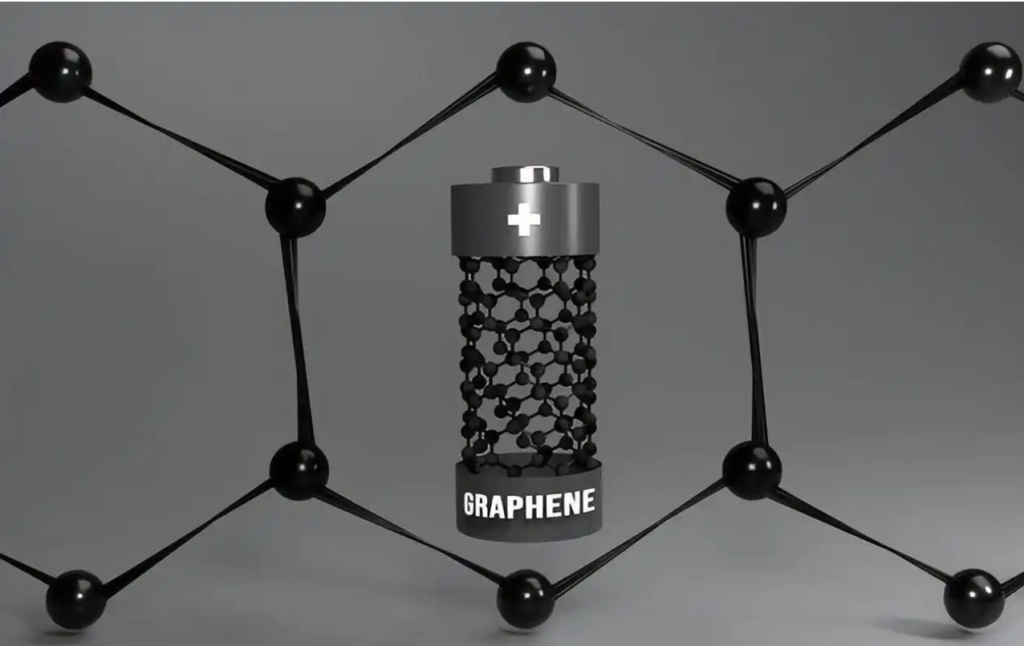Applications and Advantages of Graphene as a Catalyst Support in Hydrogen Fuel Cells
Hydrogen fuel cells are a cornerstone technology for clean energy systems, offering high efficiency and zero emissions. A key component of these cells is the catalyst, typically platinum-based, which facilitates the hydrogen oxidation reaction (HOR) and oxygen reduction reaction (ORR). The performance and longevity of fuel cells heavily depend on the properties of the catalyst support.
Graphene, a two-dimensional material with exceptional properties, has emerged as a superior alternative to traditional catalyst supports like carbon black. This article explores the applications, mechanisms, and advantages of graphene as a catalyst support in hydrogen fuel cells.

Properties of Graphene That Benefit Catalyst Support
- High Electrical Conductivity:
- Facilitates efficient electron transfer during electrochemical reactions, enhancing catalytic performance.
- Large Surface Area:
- Provides abundant active sites for catalyst dispersion, improving catalyst utilization.
- Mechanical Strength:
- Improves structural stability under mechanical and operational stress.
- Thermal Stability:
- Withstands high temperatures, reducing the risk of support degradation during operation.
- Corrosion Resistance:
- Offers superior resistance to oxidative and acidic environments found in fuel cells.
- Functionalizability:
- Can be chemically modified to enhance interactions with catalysts and reactants.
Role of Graphene in Fuel Cell Catalyst Systems
- Improved Catalyst Dispersion:
- Graphene’s large surface area allows uniform dispersion of nanoparticles, such as platinum (Pt), preventing agglomeration and maximizing active surface area.
- Enhanced Durability:
- Graphene’s high stability reduces degradation during fuel cell operation, extending the lifespan of catalysts.
- Reduced Catalyst Loading:
- Graphene’s ability to enhance catalyst activity enables the use of lower Pt loading, reducing costs without compromising performance.
- Promoted Mass and Charge Transfer:
- Its excellent conductivity and open structure facilitate faster electron and reactant diffusion, improving cell efficiency.
Graphene-Based Catalyst Support Systems
1. Graphene-Pt Composites
- Application:
- Platinum nanoparticles are dispersed on graphene sheets to create highly active catalyst systems.
- Performance:
- Studies have shown up to 50% improvement in ORR activity compared to carbon black supports.
- Advantages:
- Higher catalytic activity, reduced Pt loading, and improved durability in acidic environments.
2. Nitrogen-Doped Graphene Supports
- Application:
- Nitrogen doping introduces active sites on graphene, enhancing its interaction with catalysts and promoting ORR.
- Performance:
- Nitrogen-doped graphene-Pt composites exhibit higher electron transfer rates and better long-term stability.
- Advantages:
- Enhanced catalytic efficiency due to stronger bonding between Pt and graphene.
3. Graphene-Metal Alloy Catalysts
- Application:
- Graphene supports alloys such as Pt-Co or Pt-Ni, which exhibit better catalytic activity than pure Pt.
- Performance:
- Improved ORR activity and stability, reducing the amount of Pt required.
- Advantages:
- Synergistic effects between alloy nanoparticles and graphene enhance both activity and durability.
4. Graphene-Oxide Supported Catalysts
- Application:
- Graphene oxide (GO) supports are functionalized to improve dispersion and interaction with metal nanoparticles.
- Performance:
- GO-Pt systems show improved catalyst utilization and faster reaction kinetics.
- Advantages:
- Functional groups on GO promote stronger bonding with catalysts, increasing stability.
Advantages of Graphene Over Traditional Supports
- Higher Efficiency:
- Graphene’s superior conductivity and ability to promote uniform catalyst dispersion result in higher reaction rates.
- Longer Lifespan:
- Unlike carbon black, graphene resists corrosion and oxidation, ensuring stable performance over prolonged use.
- Cost Reduction:
- Graphene’s ability to reduce Pt loading and improve utilization can lower the overall cost of fuel cells.
- Sustainability:
- The stability of graphene minimizes the need for frequent replacement, contributing to more sustainable energy systems.
- Versatility:
- Functionalized graphene can be tailored for specific catalytic reactions or fuel cell designs.
Challenges and Future Directions
- Scalability:
- Developing cost-effective and scalable methods for producing high-quality graphene is essential for commercial adoption.
- Catalyst Detachment:
- Ensuring strong binding between graphene and catalysts remains a challenge, especially under prolonged operational conditions.
- Graphene Functionalization:
- Optimizing the functionalization process to balance conductivity and catalytic activity is a key research focus.
- Hybrid Materials:
- Exploring combinations of graphene with other nanomaterials, such as carbon nanotubes or MOFs, may unlock new performance capabilities.
- Environmental Stability:
- Investigating graphene’s long-term stability under real-world operating conditions is critical for reliable application.
Conclusion
Graphene’s exceptional properties make it a game-changer as a catalyst support in hydrogen fuel cells. By addressing key challenges in catalyst performance, cost, and durability, graphene-based systems represent a significant advancement toward practical and scalable fuel cell technologies.
As research continues, the integration of graphene with advanced catalyst materials holds the promise of revolutionizing hydrogen fuel cells, supporting the transition to a sustainable hydrogen-based energy economy.

